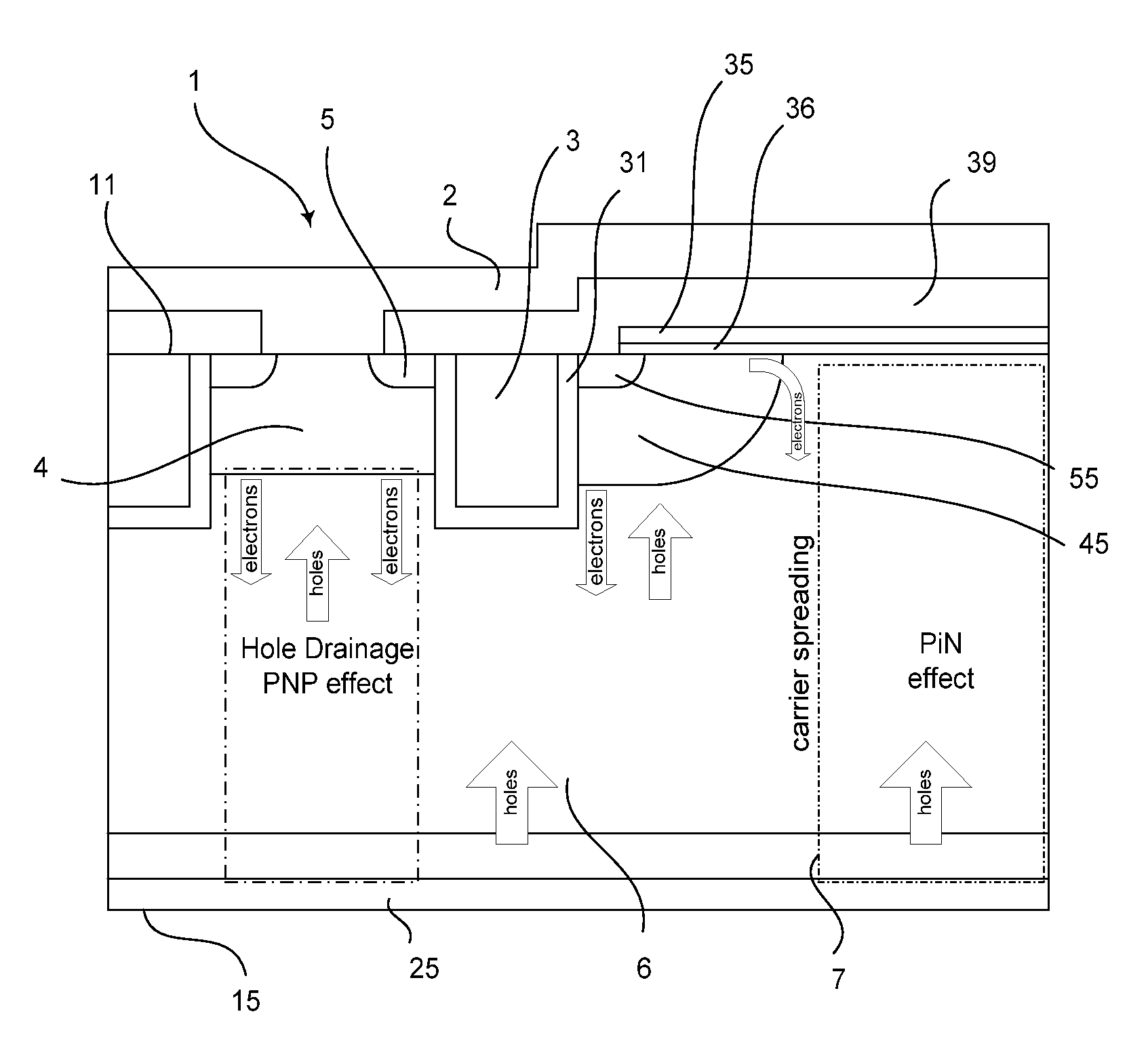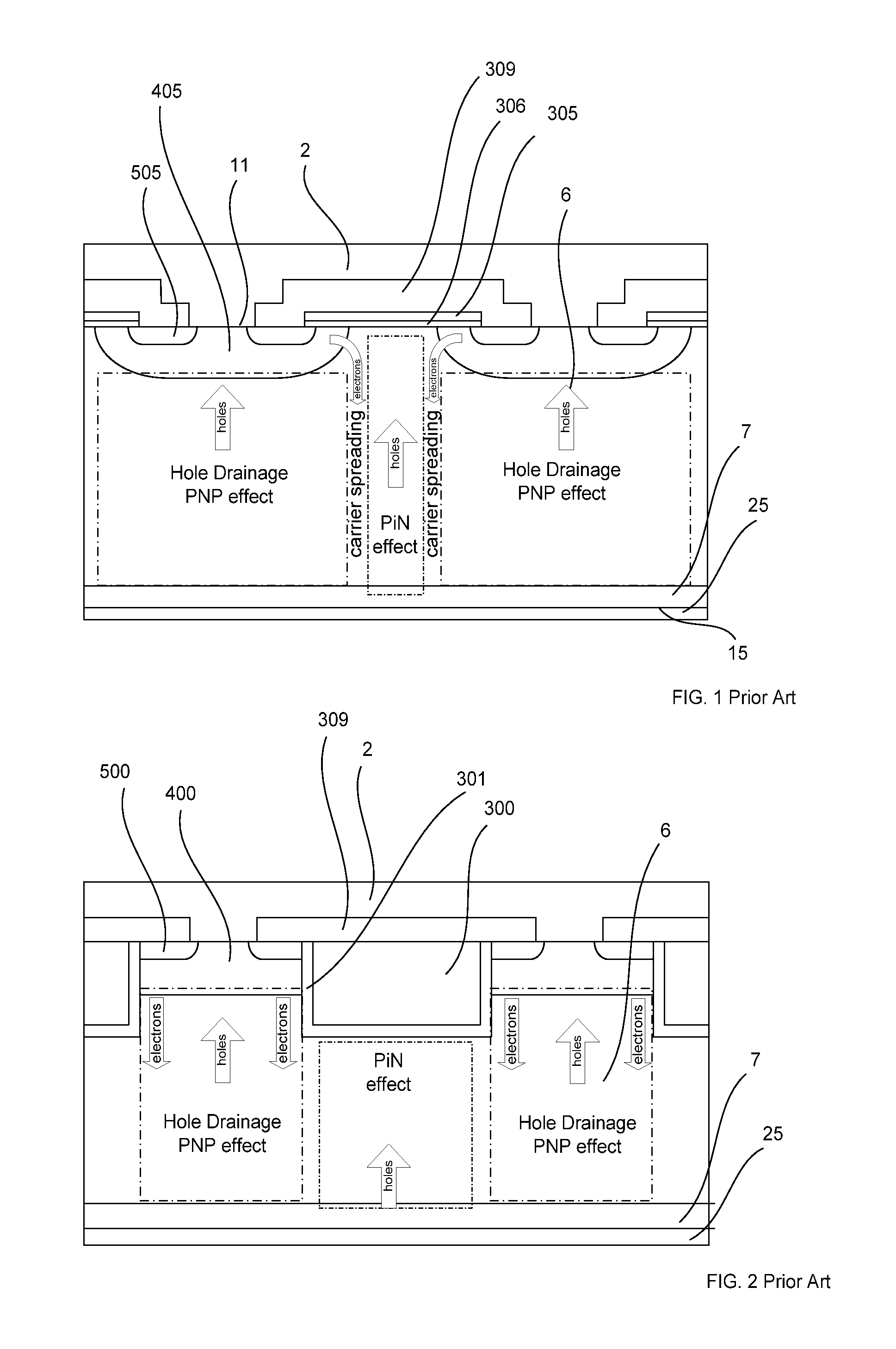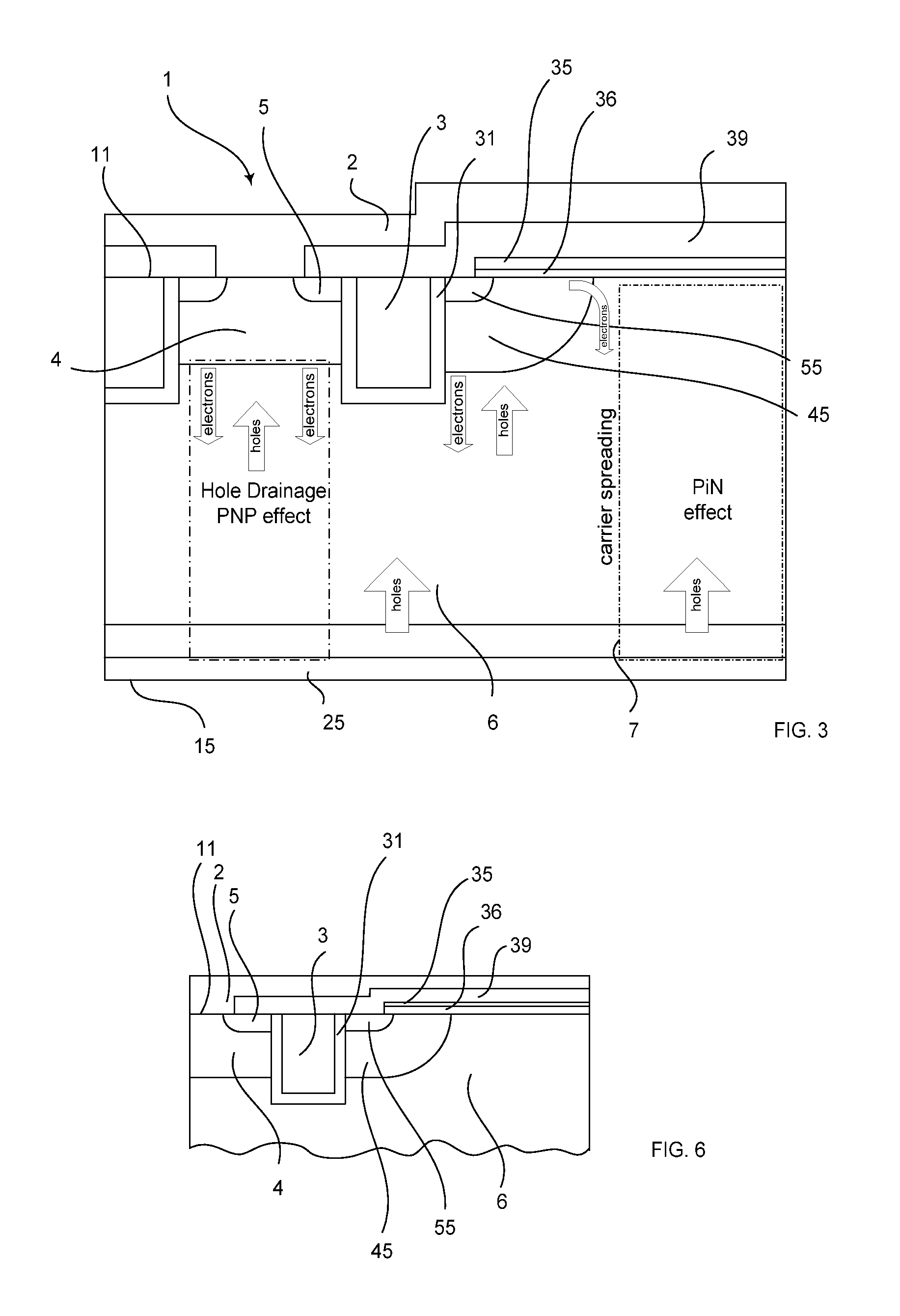Power semiconductor device
a technology of semiconductor devices and semiconductors, applied in the direction of semiconductor devices, basic electric elements, electrical apparatus, etc., can solve the problems of low cell packing density, low pin effect, and high on-state loss of devices due to a plurality of effects,
- Summary
- Abstract
- Description
- Claims
- Application Information
AI Technical Summary
Benefits of technology
Problems solved by technology
Method used
Image
Examples
Embodiment Construction
[0029]A power semiconductor device is disclosed which can provide on-state losses, improved blocking capability, low drainage of holes and good controllability.
[0030]An exemplary power semiconductor device as disclosed herein has layers of different conductivity types, which layers are arranged between an emitter electrode on an emitter side and a collector electrode on a collector side, which is arranged opposite of the emitter side. The layers can comprise:[0031]a drift layer of a first conductivity type, which is arranged between the emitter side and the collector side,[0032]a first base layer of a second conductivity type, which is arranged between the drift layer and the emitter electrode, which first base layer is in direct electrical contact to the emitter electrode,[0033]a first source region of the first conductivity type, which is arranged at the emitter side embedded into the first base layer and contacts the emitter electrode, which first source region has a higher dopin...
PUM
 Login to View More
Login to View More Abstract
Description
Claims
Application Information
 Login to View More
Login to View More - R&D
- Intellectual Property
- Life Sciences
- Materials
- Tech Scout
- Unparalleled Data Quality
- Higher Quality Content
- 60% Fewer Hallucinations
Browse by: Latest US Patents, China's latest patents, Technical Efficacy Thesaurus, Application Domain, Technology Topic, Popular Technical Reports.
© 2025 PatSnap. All rights reserved.Legal|Privacy policy|Modern Slavery Act Transparency Statement|Sitemap|About US| Contact US: help@patsnap.com



